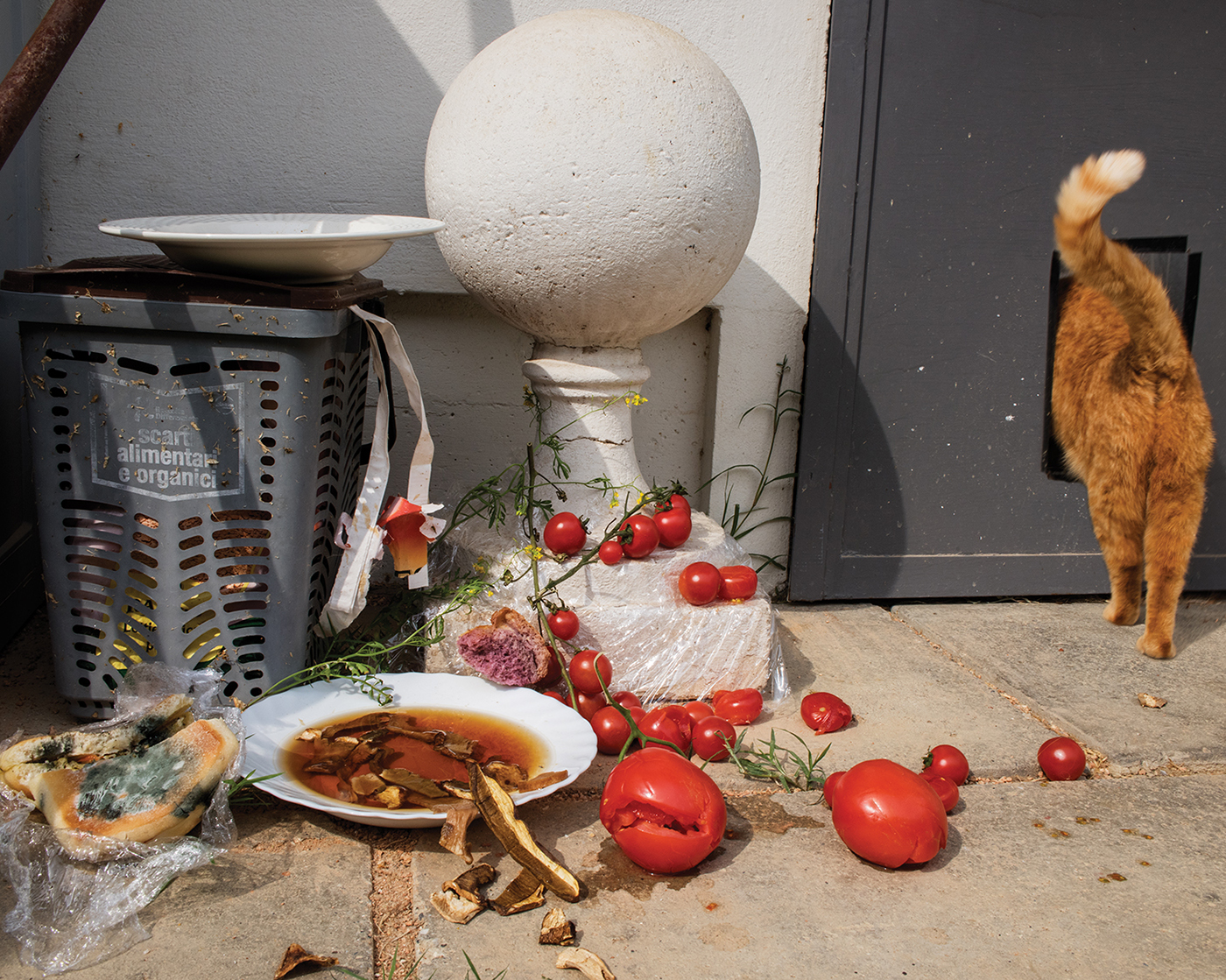






Artist's Statement
Emma Ressel
In my inability to fully understand Lugo, the small Italian town I flew over to photograph for a residency, I created my own town. As much as I would’ve liked to absorb all the local literature I could find on the culinary history of the Emilia Romagna region, my lack of Italian language skills made the texts I would normally seek shelter in largely unavailable to me. I chose to leave the truths of this town packed away on bookshelves and instead, I imagined up a culinary world I superimposed on the town of Lugo, flecked with elements of real, Romagna foods, then generously transformed. I collected the unusual, beautiful and confusing things I tasted and noticed, constructing them into my own imagined scenes.
I wanted this body of work, Olives in the Street, to remain as closely tied to a sense of place as possible, so I relied on the town’s iconography to provide a backdrop for the still life tableaus. These photographs hold the tension of a human just having left the scene, or someone about to arrive. A door might creak open any minute now, and perhaps a gust of wind will coax a glass off the table so that it spills and shatters. The pictures are alive and vibrant with generous helpings of luxurious compositions, yet ghostly and absent of sensical narrative.
As I made this work, it often occurred to me how strange it was that the residents of Lugo had no idea there was an unassuming American girl weaving her way throughout the narrow streets, marching her digital camera, tripod, and armfuls of props around late at night and as the sun rose, creating tiny little worlds and stories that no one would see. There isn’t much evidence of her being there, really, save for a few smears of oil and honey on the occasional cement slab, and maybe a few olives that rolled down the street.


